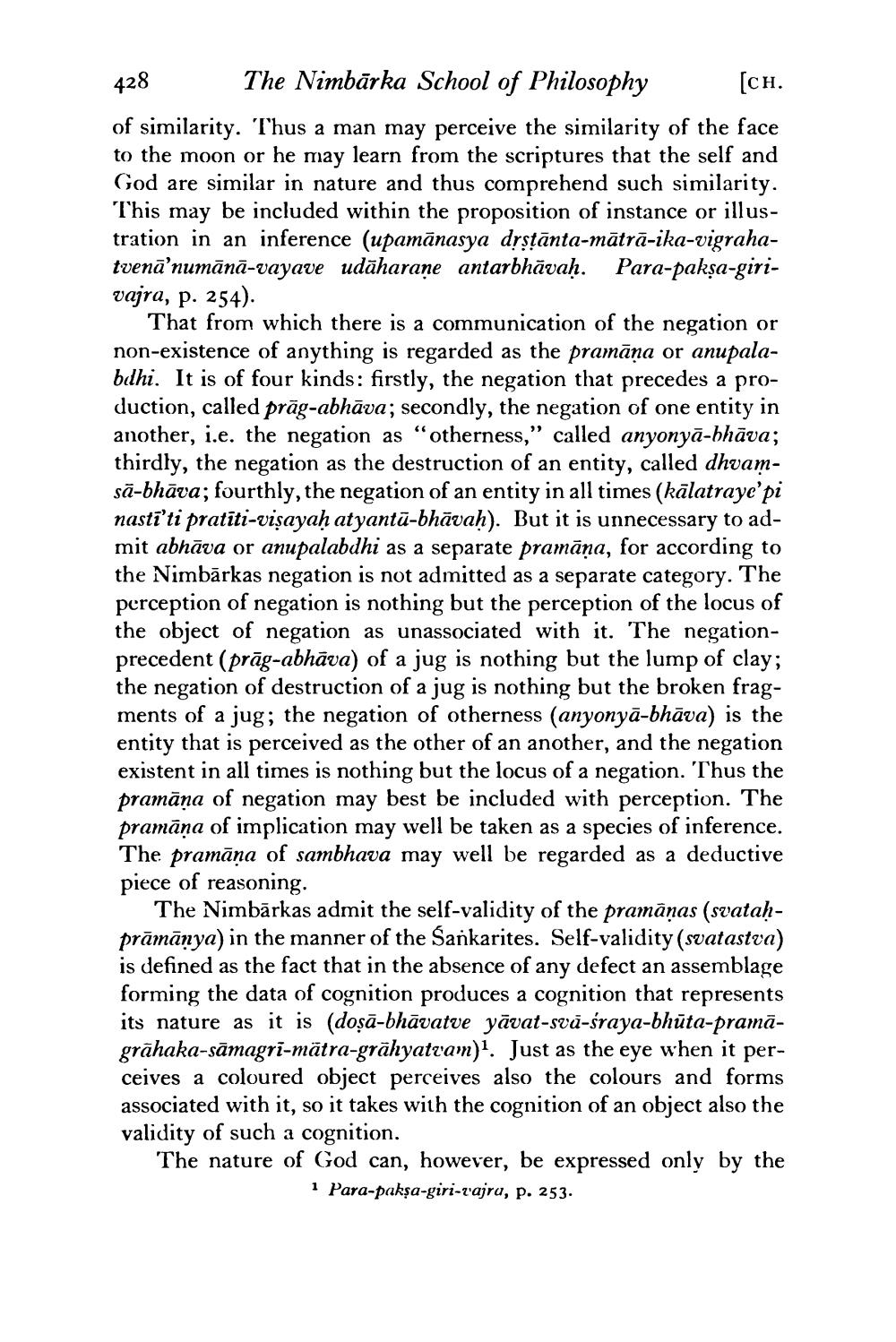________________
428
The Nimbarka School of Philosophy
[CH.
of similarity. Thus a man may perceive the similarity of the face to the moon or he may learn from the scriptures that the self and God are similar in nature and thus comprehend such similarity. This may be included within the proposition of instance or illustration in an inference (upamanasya dṛṣṭānta-mātrā-ika-vigrahatvenā❜numānā-vayave udaharaṇe antarbhavaḥ. Para-pakṣa-girivajra, p. 254).
That from which there is a communication of the negation or non-existence of anything is regarded as the pramāņa or anupalabdhi. It is of four kinds: firstly, the negation that precedes a production, called prāg-abhāva; secondly, the negation of one entity in another, i.e. the negation as "otherness," called anyonyā-bhāva; thirdly, the negation as the destruction of an entity, called dhvamsā-bhāva; fourthly, the negation of an entity in all times (kālatraye’pi nasti'ti pratiti-viṣayaḥ atyanta-bhavaḥ). But it is unnecessary to admit abhava or anupalabdhi as a separate pramāna, for according to the Nimbarkas negation is not admitted as a separate category. The perception of negation is nothing but the perception of the locus of the object of negation as unassociated with it. The negationprecedent (prāg-abhāva) of a jug is nothing but the lump of clay; the negation of destruction of a jug is nothing but the broken fragments of a jug; the negation of otherness (anyonya-bhāva) is the entity that is perceived as the other of an another, and the negation existent in all times is nothing but the locus of a negation. Thus the pramāņa of negation may best be included with perception. The pramana of implication may well be taken as a species of inference. The pramana of sambhava may well be regarded as a deductive piece of reasoning.
The Nimbarkas admit the self-validity of the pramāņas (svataḥprāmāṇya) in the manner of the Sankarites. Self-validity (svatastva) is defined as the fact that in the absence of any defect an assemblage forming the data of cognition produces a cognition that represents its nature as it is (doṣā-bhāvatve yāvat-svā-śraya-bhūta-pramāgrāhaka-sāmagri-mätra-grāhyatvam)1. Just as the eye when it perceives a coloured object perceives also the colours and forms associated with it, so it takes with the cognition of an object also the validity of such a cognition.
The nature of God can, however, be expressed only by the 1 Para-paksa-giri-vajra, p. 253.




